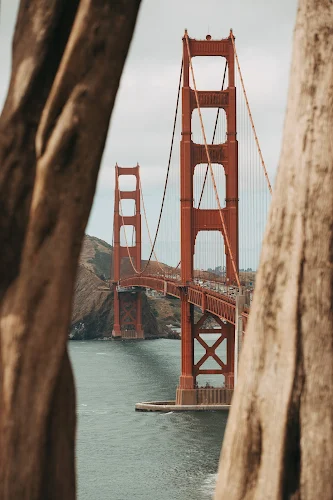
The Golden Gate Bridge is a suspension bridge spanning the Golden Gate, the entrance to the San Francisco Bay from the Pacific Ocean. It connects the city of San Francisco to Marin County, California. The bridge was designed by engineer Joseph Strauss, and was completed in 1937, after four years of construction.
Structure

Is considered an engineering marvel and an architectural masterpiece. The bridge is made up of two main towers that are connected by two main cables. These cables are made up of thousands of individual wires, and they support the roadway of the bridge. The roadway is suspended from the main cables by a series of vertical suspender ropes.
Is one of the most photographed landmarks in the world, and it is also one of the most popular tourist destinations in San Francisco. The bridge is also a popular spot for suicide prevention, and since the bridge opened, over 1,600 people have died by jumping from the bridge.
The Golden Gate Bridge is also a symbol of American ingenuity and determination. The bridge faced many challenges during its construction, including strong winds, difficult terrain, and the need to build the bridge in a way that would withstand earthquakes. Despite these challenges, the bridge was completed on schedule and under budget.
Conclusion
In conclusion, the Golden Gate Bridge is an engineering marvel and architectural masterpiece that connects the city of San Francisco to Marin County. It is a symbol of American ingenuity and determination, and it is a popular tourist destination and a spot for suicide prevention. The bridge's history, design, and challenges faced during construction are fascinating and make it an important piece of American history.







